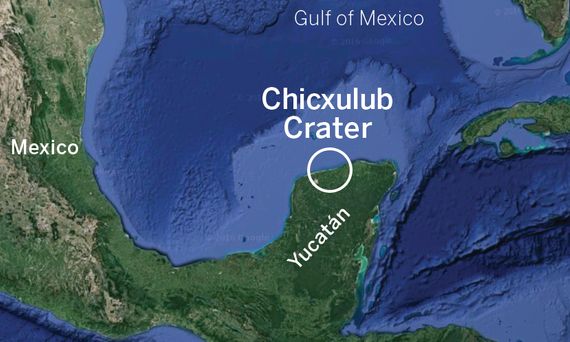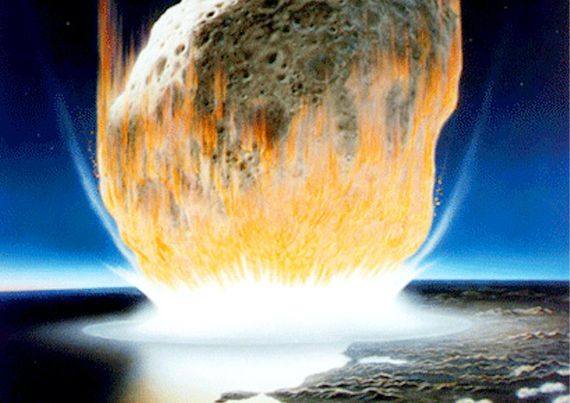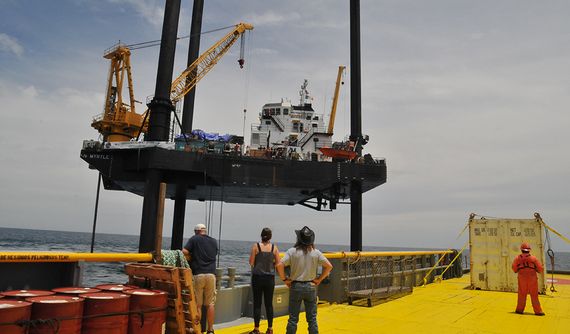Some 66,038,000 years ago, give or take 11,000 years, an asteroid or a wandering comet at least 12 kilometres in diameter happened to find in its trajectory a fertile planet full of life, although without any people around to give it a name. The cosmic object brutally collided with the planet, triggering a series of catastrophic events that would lead to the extinction of the lineage of creatures that reigned on its surface at that time, the reptiles we know today as dinosaurs.
Apart from some specific details, this is the basic story that children learn in school and that is part of the general culture. Of course, it is a simple summary that omits some essential facts. First and foremost, not all the dinosaurs perished, since the approximately ten thousand species of birds that populate the world today also belong to this group. Nor were the large dinosaurs the only victims of that great extinction that marked the transition from the Cretaceous to the Paleogene (K-Pg): 75% of terrestrial life disappeared. But above all, for years scientists have debated whether the asteroid’s impact was the main factor triggering the global extinction or if the effect on the climate and the atmosphere of a monstrous episode of volcanic eruptions in the so-called Deccan Traps in present-day India, which lasted for almost 30,000 years, could have weighed more heavily.

In search of answers, in 2016 an international team of scientists led by the University of Texas at Austin undertook a major project to drill into the Chicxulub crater in Yucatan (Mexico), the large hole nearly 200 kilometres in diameter that the asteroid collision opened in the face of the Earth. To this end, the researchers installed an ocean platform to extract rock samples between 500 and 1,300 metres below the seabed, where today is found the ring of peaks that surround the crater.
The first day of the Cenozoic
Analysis of the crater’s rocks has revealed so much data that scientists have been able to reconstruct in minute detail what happened after the Chicxulub asteroid hit. In their study entitled “The first day of the Cenozoic“, recently published in the journal PNAS, they not only present new clues about the catastrophic event that can help to settle the debate about the primary causes of the K-Pg extinction, but also offer a chronicle of what it was like that day of the apocalypse.
If anyone had been there to witness one of the greatest cataclysms in Earth’s history, they would have seen an immense rock the size of an island fall into the sea. University of Texas geophysicist Sean Gulick, lead author of the study, tells OpenMind that the energy of the impact was equivalent to 10 billion atomic bombs. In just one minute, the object opened a transitory crater 100 kilometres across that penetrated more than 20 kilometres into the Earth’s crust, almost reaching the mantle of the Earth, and whose edges rose to about 10 kilometres, raising a spectacular plume of vaporised and fragmented rock.

Three minutes after the impact, the temporary crater disappeared due to the rebound of the Earth’s crust, similar to the small bud that rises when a drop falls onto water. Thus, the hole was replaced by a mountain crowned by a cap of molten rock. Half an hour later, this large blister also collapsed and a definitive crater began to form between 600 and 1,000 metres deep, surrounded by an annular mountain range that in turn was quickly covered by a layer of about 40 metres of sediments and molten rock.
Huge fires and a mega-tsunami
At this point the disaster was far from over. According to Gulick, “the asteroid impact caused a series of overlapping events.” On the mainland, the increase in atmospheric temperature caused by the impact ignited huge fires that engulfed everything in flames up to thousands of kilometres away. For its part, the ocean also reacted to the gigantic collision. Within an hour, the waters that flowed in to fill the crater covered the peaks with 10 metres of rock, which in a few hours would grow to 80 metres. At the same time, the mega-tsunami created by the shock created a wall of water hundreds of metres high that swept across the sea in all directions at dizzying speeds, penetrating inland as far as the current US state of Illinois.
But when the sea departs, it must later return. Twenty-four hours after the impact, the returning waters poured back into the crater, dragging an avalanche of materials brought in from faraway lands, from fragments of the land and its vegetation to charcoal from calcined logs. All this preserved forever the planet’s lethal wound under a layer of 130 metres of rock.

“Not all dinosaurs died that day, but many dinosaurs did,” says Gulick. In reality, that was not the end of the catastrophe, but only the beginning. When analysing the rocks, the geophysicist and his collaborators were surprised by something they didn’t find: sulphur. In the samples extracted from the crater there was a notable absence of sulphur minerals, suggesting that these rocks were vaporized —up to 325,000 million tons of sulphur volatilized into the atmosphere. Sulphur, dust and soot “probably darkened the sky for months, perhaps longer,” causing “a global temperature collapse that froze large parts of the world for much of the year,” explains Gulick. In turn, the reduction in photosynthesis destroyed food chains both at sea and on land, leading to the great global extinction we know today.
“I would argue the data very strongly supports the Chicxulub impact as the cause of the Cretaceous-Paleogene extinction,” suggests Gulick. “It is unclear whether the first Deccan eruptions occurred before or after the Chicxulub event, but additional large volume Deccan eruptions continued well into the Paleogene; however, the record of extinction shows a knife-sharp extinction event with no precursors and no delayed recovery.” Specifically, and according to an earlier study by scientists at the University of Texas, in less than a decade marine life had already colonised the crater again, and 30,000 years later it was as if nothing had happened. Except that the cataclysm changed everything; without it, who knows if humans would be here today.
Comments on this publication